-
Posts
4,260 -
Joined
-
Last visited
-
Days Won
100
Content Type
Profiles
Forums
Resource Library
Events
Gallery
Blogs
Store
Community Map
Posts posted by Mayner
-
-
3 hours ago, popeye said:
You might need a Permanent Way teem to keep on top of it.
Bit like the real RGS keep maintenance to the absolute minimum to run the odd train.
Haven't had much time or interest in running/maintaining the garden railway during the last couple of years. Last spring-summer's La-Niña weather systems with the tail end of tropical cyclones has not helped, though we are due dry El-Niño systems this spring-summer hopefully without the bushfires/flashfloods Australia is already experiencing. Currently everything is too saturated to burn and the raised track base has worked well when the garden floods after heavy rain, at least we haven't got crocs, snakes and poisonous spiders, though we did see a copperhead while on holiday in the States

Track gang is getting a bit scarce we had a very active garden railway group with monthly running sessions on each others railways when we started out, but became defunct in recent years younger members haven't the time to play with trains, others moving on or passing away
-
 1
1
-
-
7 hours ago, Mike 84C said:
Thank you so much for posting those pictures. For me they tell such a story, a narrow gauge railway doing what it was built for and in the face of neglect and adversity. Just shows how much neglect a railway will take and keep operating. Brilliant photos!
My stepdaughter is a track engineer for NetWork Rail , had to lean on my chair laughing so much!
Its an industrial railway doing what its intended to do and no more transporting peat from the loading points to the power-stations, Briquette plants and road transfer plants.
Permanent way and rolling stock is radically different from heavy rail practice. Most of the track portable and permanent is sectional complete with Setrack Points, Portable Track is usually laid directly on graded peat on polythene on the surface of the bog, using BNM custom buolt graders/track laying machines, permanent track is usually laid on polythene under lay on ravel ballast, peat and grass help bind everything together. The wagons are unusual in that the wheels rotate independenty on the axle which both improves stability and reduces wear on track and wagons are completely un-braked.
Operation was intensive in its heyday operating 24hr daily 365 to feed the power stations transporting around 5million tonnes annually mpre than twice CIE/IEs tonnage. Trains operated on line of sight, drivers possibly on bonus, de-railed wagons were simply dumped at the line side and recovered at a later date the focus was on feeding the power stations. The commercially successful Clonmacnoise and West Offaly Tourist operation closed because it was disruptive to peat traffic to the then new West Offaly Powerstation.
The maintenance depots on some of the systems had an air of a scrapyard with old or obsolete locos and stock stored out of use since the 80s as Wagon Masters replaced the R&H locos of the 40s-60s, the Wagonmasters later replaced by more modern BNM designed locos from the late 80s onwards, toegther with a bewildering variety of peat harvesting machinery as sod gave way to milled peat production.
Wear and tear on locos, stock, track and bog machinery would have been phenonomal with the sheer volume and intensity of traffic
-
 2
2
-
 4
4
-
-
Apart from OO Works J15 no rtr manufacturer currently produces a rtr model of an Irish steam loco, Murphy Models formerly released Irish repaints of two Bachmann OO gauge British outline locos an LMS Jinty 0-6-0T and a Southern Railway N Class 2-6-0 loco.
I think one of the directors of Irish Railway Models-Accurascale explained that it was not practicable to produce its GWR/BR Manor locomotive as a rtr EM gauge model (closer to 4'8"½ gauge than OO) due to the manufacturing tolerances of the materials used. A P4 or EM gauge modeller would need to replace the existing chassis with a sheet metal chassis and replace the plastic injection moulded splashers with sheet metal as it was not practicable to achieve sufficient running clearace between wheels, cylinders and splashers in P4 or EM with a plastic injection moulded or dies cast body.
In my experience problem becomes more acute in 21mm gauge where its challenging to achieve sufficient clearance between wheels and splashers even when using sheetmetal (brass or nickel silver) construction unless you work to P4 standards with close to prototypical wheel standards.
-
 4
4
-
 2
2
-
-
7 hours ago, popeye said:
The weather is having a bad effect on all the wood and needs a lot of maintenance.
Would some kind of plastic/PVC used on houses be better than wood?
Treated timber was the best available option when I started work on the layout in 2007, plastic/PVC is not widely used as a building material in New Zealand though becoming fashionable for front garden fences/gates on more expensive houses!
The timber is graded for outdoor use mainly fencing, retaining walls and decks, I had a lot of the timber in stock from my days as a jobbing builder and has stood up fairly well to 17 years exposure to the Waikato weather, I had to replace half the plastic sleepers on the line after about 10 years use!
Dealing with the effects of the weather makes Garden Railways more interesting to maintain and operate than an indoor layout, more in common with full size railway track and structure maintenance.
-
 1
1
-
-
3 minutes ago, Darrman said:
Once the Taras stop (if they haven't already), what will the fate of the Navan branch be? I can't see Irish Rail introducing Drogheda-Navan shuttles, nor any replacement rail freight. Is this the end?
Basically it depends on ore prices rising sufficiently to make it worthwhile for Boliden to open up the "Tara Deep' ore body, the existing Tara and Bula ore-bodies are bascially exhausted. It looks like Boliden is planning to continue using rail if mining ever resumes, IE was planning to order new ore wagons to replace the existing 46 year old Tara wagons
Boliden have began development work on "Tara Deep" https://www.boliden.com/48fd1d/globalassets/investor-relations/reports-and-presentations/capital-markets-day/2017/tara/tara-deep-mineral-resource.pdf but development work ceased as a result of flooding before closure.
IDrogheda-Navan shuttles would basically depend on the NTA or Meath County Council subsidising the service.
-
I haven't had time to do anything on the model railway front since July as a result of a family crisis, though I finally made time this weekend to carry out an overdue inspection of the Jackson County.
I first started work on the Jackson County in 2007 using treated timber piles and track supports which have held up fairly well to local weather conditions (high humidity -high rainfall.

Most serious immediate problem was a 6"X2" splice plate had rotted right through at a trackbase joint on the High Line effectively severing the Staging Tracks in the garage from the rest of the railway. More long term problem is that some of the posts that support the garden fence are beginning to fail requirieng expensive replacement although the fence rails and boarding is still in reasonable condition. I originally fixed the track base directy to the fence rather than independent foundations to get something up and running quickly. I still have a good stock of treated 6X2 in stock, usually nail with annular gun nails, though the nicad charger for the the nail gun is kaput and replcements unavailable.

Two sections of track-base had rotted through above supports on the main line, though the supporting structure appears ok. Possibly installed the trackbase with the grain facing upward trapping moisture.

Utah Junction looking scruffy, needs weed and moss treatment and hedge trimming. Once a sunny sport this area is in the shad for most of the day a small native shrub planted 15-16 years ago has grown into a medium size tree, because of our humid climate trees (and Grass) grows at a faster rate than the UK or Ireland, we have a 40' tall 15 year oak close to our house.

The Tunnel and bridge are holding up well though we gave up on the water feature because of falling leaves and tree debris

Though we would run RGS Motor 6 on the inspection trip though the motor appears to have overheated. The Motor is a Berlyn Locomotive Works Korean Brass rtr model bought mint second hand on e-bay for an eye watering price by Irish standards several years ago. Planning to convert the model to battery RC operation some time during the next 12 months after several years in a display case. Figures are Woodland Scenics nicely modelled though brittle Engineers (driver) right hand snapped off.

Motor 6 on the main line High Line in the background border shrubbery in this area died off shaded by a tree several a couple of years ago.

Into the "Jungle" this area was originally a Sun trap planned as the site for a large wooden trestle similar to those at Ophir on the RGS, but taken over by lillies during Spring before dying off during the Summer. Took the photos on a sunny Spring morning before heavy rain and thunderstorms in late afternoon evening.

Obstruction faced by Motor 6 ivy grew across the track during the last 2-3 weeks with new Spring growth, apart from trackbase repairs, trimming back the shrubbery, next big job is weedkilling (residual weedkiller backpack sprayer) depending on the weather forecast.
While the railway is 1:20.3 scale weather, vegetation and animals are all 1:1 scale and call the shots.
-
 9
9
-
-
This thread or Tara Mines ?

-
Scratchbuilding or commissioning someone to scratch build a GSWR 4-4-0 is probably the most practical approach for someone who wants a GSWR 4-4-0 as its difficult to see a manufacturer or "commissioner" with the possible exception of OO Works producing a rtr model or a kit.
One of the difficulties in the sheer level of variation among the three classes of pre 1900 and six Classes of post 1900 4-4-0s that survived into the CIE era, not counting the ex-WLWR 4-4-0s
JHB points out that 4-4-0s "The Kerry Bogies (a tiny engine) once worked the Kenmare branch all surviving members of the class were re-built by the GSR with Belpair boilers once common in Cork and Kerry all had gone by 1954.
I produced a kit of the 52 Class with raised round topped firebox that could be assembled in GSWR or GSR/CIE condition, the majority of the Class were re-built with Belpair Boiler boilers in the 1930-40s in my opining spoiling the looks of the loco, 59 the "Quiet Man" engine was basically a 'one off" loco with a flush round topped firebox and 4'4" boiler not shared with other members of the class, possibly 3 sets of boiler and cab toolings for a single class of loco.
The sheer number of variations in the slightly larger 60 Class are somewhat mind-blowing along with the original and superheated belpaire boiler versions, the GSR re-built come locos with new raised running boards and Bazin cabs similar to the large 321 Class to give them a more "contemporary" look during the 1920s.
In all probability one of the large "modern looking" post 1900 321 or 333 Class 4-4-0s with a rake of Bachmann/Mainline Period 1 LMS coaches in GSR or early CIE livery would be a better option for an Irish "Train Set" steam loco, though unlikely to have hauled a solid rake of 6 wheel coaches unless on a GAA special.
The re-built 321s were reasonably consistent in their appearance an express passenger loco used on the Main Line don't know if they worked to Limerick, Waterford or Tralee.
-
 3
3
-
 1
1
-
-
A Dundalk-Tuam Beet special operated up to the closure of the Tuam factory at the end of the 84/85 Campaign, Navan would have been served by a trip working to and from Drogheda. I was stopped by a very long Tuam-Dundalk empty special at Coolmine Level Crossing on my way home from work one Autumn evening in 84.
Its possible Clogherhead might have loaded 2-3 wagons daily by a trip working from Drogheda in a similar manner to Fenit in its final years. In later years beet was usually unloaded directly by tipper lorry to the wagons from a raised section of the loading bank. Trucks would have been a mixture of Ford, Bedford and Dodge SWB 2 axle tippers with high wooden body owned by local hauliers rather than 'company' vehicles.
There is a 1950s photo of beet being tipped into wagons at Tullamore in the O'Dea National Library collection
-
 4
4
-
 1
1
-
-
1 hour ago, GSR 800 said:
I wonder if sales were impacted by the notorious difficulties balancing 4-4-0 kits? (IIRC there's a thread with an S class under construction where this is noted)
Alternatively, the sheer longevity of the 2-4-0s probably gives them the edge, they can be justified on an early '60s layout.
Don't think balancing was an issue more the fact that I produced 3 variations of the MGWR 2-4-0 and 1 of the GSWR 4-4-0.
In my experience the demand for kits of Irish locos/stock is very low, with a relatively small number of regular customers, a high proportion of whom are experienced builders.
There is little difference between balancing a 4-4-0 and a 2-4-0 ideally both types best assembled with a weighted tender to haul a reasonable load.
Balancing appears to have been a problem with the OO Works GNR(I) U where there does not appear to have been a provision for transferring weight from the tender to the loco drawbar
-
 1
1
-
-
3 hours ago, leslie10646 said:
JB
I agree that a rtr model of one of the GSWR 4-4-0s, would be delightful, but did they run many trains after about 1955?
A quick scan of some of the books, plus Irish Railfans' News for 1955 suggest very rapid dieselisation and such mainline steam as was on the Cork line was 400 or 800 Class 4-6-0s, or Woolwich moguls.
The humble J15 still did a lot of secondary work still and bizarrely a handful of MGWR 2-4-0s (like Mayner's little engines) ran some of the branches right into the 1960s, as did various ex-MGWR 0-6-0 classes.
Its more likely that a J15 hauled ex-GSWR branch line trains in CIE days, the majority of GSWR branch lines lost their passenger services by 1947 leaving Birr, Kenmare, Valencia and Youghal open to passenger traffic. Large ex-GSWR 0-6-0s and 4-4-0s likely to have been used on Cork-Youghal Line. Valencia branch trains were restricted to 6w coaches until restrictions eased and bogie coaches with large dia buffers allowed during mid 1950s
Interestingly my ex-MGWR 2-4-0 kits sold a lot better than my ex-GSWR 52 Class 4-4-0 kits in a 3:1 ratio.
Perhaps the best option would be for OO Works to produce a model of McDonald's NER D38 Class https://www.lner.info/locos/D/ner_38.php which look very close to the GSWR 60 Class, though its difficult if there is sufficient interest in a D38 Class among NER enthusiasts.
Or to ask the company that holds the streaming rights to the Quite Man to sponsor a train set with a high quality model of No 59
-
 4
4
-
-
First time I had a chance to operate the layout (play with trains) since June as a result of family commitments, CIE got an order to move another shipload of animal feed that arrived at Northwharf with the line open to wagon load traffic as-required.
The yard is basically full of wagons! Local yard staff and train crews had hard words with Motive Power Control and sent a B121 after an A Class buffer locked running round wagons on the last grain special. The B121 is positioning bulk grain wagons for loading from the elevator, with hard topped wagons for bagged feed.

There is a lot of shunting involved as only 2 wagons of bagged and 1 bulk grain wagon can be loaded at a time!
The grey object behind the crane is a 3D print of an American elevator that took the best part of a day to print and punctured the printer p.f. film fortunately without destroying the printer LCD screen (the joys of home 3D printing)
I am planning to build a dry-goods store in this area corrugated cladding and curved roof similar to Ranks Clara to fill the area between the old brick Maltings building and the elevator.

The G Class dropped her guts (as been known to happen) and the B121 took over the shunting of laden H Vans between the mill and yard tracks.

"Edward" and his handler moved the empties one at a time from the headshunt to the Mill. Its probable that wagons may have been used by capstan (rope) power on the Wharf siding though a modified tractor is likely to have been used by the late 60s, though a shunting horse would make a nice scenic feature.

The wagon by the mill is a cripple (no couplers) and Edward go the gig because I seem to have mislaid my Hornby Peckett which is concerning.

B125 with her train made up and ready to depart leaving Northwharf to slumber until the boat comes in.
For me the real draw back with the layout, is that I can only run very short trains because of the restricted space (7'6")
-
 10
10
-
 1
1
-
-
Getting a bit pedantic B145 hauled the last Down Burma Road goods according to the WTT the WLWR down road was from Sligo to Limerick & Waterford Irelands Longest continuous main line even if it involved a reversal at Ennis Junction
In its final years of operation the Sligo-Limerick and Limerick-Sligo goods trains basically operated as fast freights only calling at Ennis, Gort, Athenry and Tuam en-rout before becoming an all stations stopper serving Kiltimagh, Swinford, Charlestown and Tubbercurry on the Burma Rd
-
 2
2
-
 1
1
-
-
Stone buildings look very impressive, I must complete the buildings I started for the dock layout about 10 years ago, got to the same stage completing the stonew work and window openings and never progressed further.
-
 1
1
-
-
In OO probably easier to scratch-build the body in plasticard on a Dapol Presflow or IRM Ballast Plough, in later years IE rebuilt the remaining ex-GSWR Brakes with similar running gear and ploughs to the "modern" ballast prloughs
-
 1
1
-
 1
1
-
-
The early version of the JCB3c similar to the Airfix/Dapol model had largely disappeared by the early 70s replaced by the more angular 3c2 model. When I started work in 76 our contractor replaced his 3c with a 3C2 possibly engine or hydraulic pump worn out

An older machine might survive longer on light work like loading sand into railway wagons, I would fill-in or remove the teeth from the bucket, seldom used on a JCB (backhoe loader) and remove the backactor and replace with a rectangular block of concrete as a counterweight if only used for loading sand.
-
 4
4
-
 1
1
-
 1
1
-
-
Adayoyle/Aghadavoyle was a popular location for models before Tony Miles built his Adavoyle layout during the 1960s/early70s a Model Railway Society of Ireland committee member had a OO gauge Adavoyle layout at at time models of Irish railways were extremely uncommon.
I never got to see the layout, but saw some of the locos and stock, very much in the scratchbuilt body on a modified rtr chassis school of modelling. I picked up an O Scale Clogher Valley 0-4-2T on a triang Jinty chassis when the club disposedof his models. Loco body was a reasonable model in card and timber, but I wanted the chassis for a OO gauge project.
-
 1
1
-
-
Have IE/Shannon Foynes Port Company identified an actual freight flow/customer or allocated funding for terminal facilities when the line re-opens in 2025?
-
 3
3
-
-
Not much of interest in the way of shunting or the loading operation at Navan, the Dublin Port unloading operation is much more interesting with a lot more shunting.
Basically the entire train of wagons is loaded inside a big shed, the only shunting as such is the loco running round the train.
The entire Tara Mines operation was covered in an Irish Railfreight Video published by Paul Shannon during the early the 1990s, its possible Markle Associates may be able to help.
-
 2
2
-
 1
1
-
-
On the face of it Autumn makes sense relatively quiet time of year for cropping farmers and historically relatively dry settled weather conditions.
The NZ Fieldays largest agricultural event in the Southern Hemisphere aimed mainly at the at the pastoral and forestry sectors held June (early winter) during the quiet period before the calving and lambing seasons when farmers have to work around the clock.. The Fieldays held in a permanent event centre is not as muddy as the ploughing
 https://www.fieldays.co.nz/attend-fieldays/about-fieldays
https://www.fieldays.co.nz/attend-fieldays/about-fieldays
-
I built a small 4mm (EM gauge) industrial layout using C&L bull head track in a small apartment in the UK about 30 years ago!
Pointwork handlaid using their abs chairs and sleepers and plain trackwork using C&L flexible track, fairly straightforward to use layout operated at home and at a number of exhibitions in Ireland and the UK including Warley
As Horsetan indicated can work out expensive, especially if you use their pre-formed switch blades and crossing assemblies.
Peco ready to lay Bullhead track system would probably be a better option if you are working in OO https://peco-uk.com/blogs/news/bullhead-oo-fine-scale-code-75-track
Interestingly the chaired track is not too noticeable at normal viewing distance
-
 1
1
-
-
7 hours ago, Westcorkrailway said:
Your right. If regular engines could be converted to hydrogen with relitive ease on tractors, trucks or even cars. It would cut out the huge proportion of co2 burned in producing a new engine while making current engines last a little bit longer as well as be great for the environment
Its being done in New Zealand one transport company is trailing a dual-fuel diesel-hydrogen truck for long haul work using the existing engine https://www.stuff.co.nz/national/131659022/southlandbased-transport-company-launches-dual-fuel-truck-powered-by-diesel-and-hydrogen-gas while hydrogen diesel conversions are being trialled on short haul waste disposal and civil engineering work in Auckland. Meanwhile Huyandi is pushing fuel cell technology with its Xcient range of trucks https://www.hyundai.co.nz/trucks/xcient/fuel-cell?gclid=EAIaIQobChMI9-qCsqywgQMV_R-DAx2MtAs8EAAYASAAEgJJKfD_BwE
The fuel is carried in cassette/container mounted behind the cab on the diesel conversions, probably need a fuel tender (not unlike the Union Pacific Gas Turbines) for a diesel loco to run from the West of Ireland to Waterford and back.
Don't think there is the traffic density to justify main line electrification in Ireland, though battery for passenger trains seems to be a no-brainer after all a Drumm Battery Train managed Amiens St-Gorey and back 90 years ago, before introducing battery trains into regular service on Dublin suburban duties.
-
 1
1
-
 1
1
-
-
Crude as hell I normally used flatbottom rail soldered to copperclad sleepers to represent flatbottom jointed track and bullheard rail with abs plastic chairs and sleepers for bullhead.
I dropped a clanger of spacing the Yard tracks too close to the running line and struggled with getting double slip points to work!
The main weakness was that I struggled to build a workable 21mm gauge layout within a 7'6" x1'6" space with 1:6 points, the same space is now occupied by a OO gauge Timesaver shunting layout which uses Peco small radius points and a run round loop and fiddle yard long enough for a Bo Bo diesel and 4-5 wagons.
The MM B141 runs on Ultrascale EM profile wheels, stock mixture of modified OO wagon kits on Gibson wagon wheels on extended axles.
If I was starting out again I would probably work to Double O Gauge Society Intermediate rather than EM standards, allowing stock IRM/MM/Bachmann wheels to be used, the increased OO running clearances potentially allow main line locos and stock to run through smaller radius curve/crossing angle than using EM or P4 standards
-
 6
6
-
 1
1
-
 1
1
-
-
Less is more in a way, the backscene with the coastline and hill really brings the layout to life.
-
 2
2
-
.png.c363cdf5c3fb7955cd92a55eb6dbbae0.png)

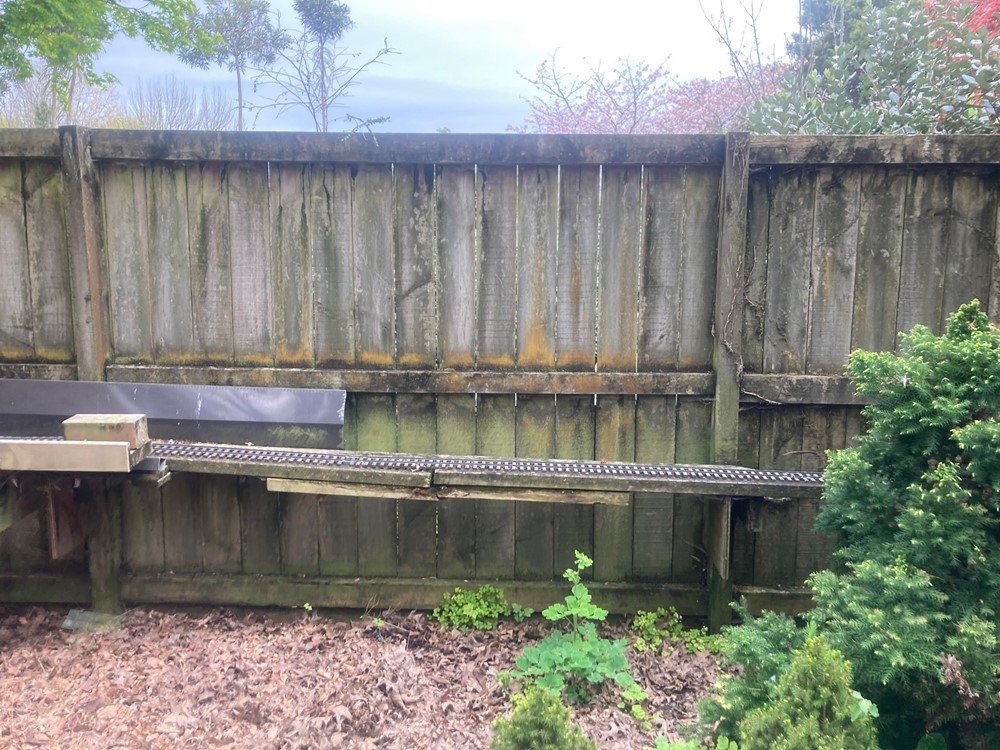
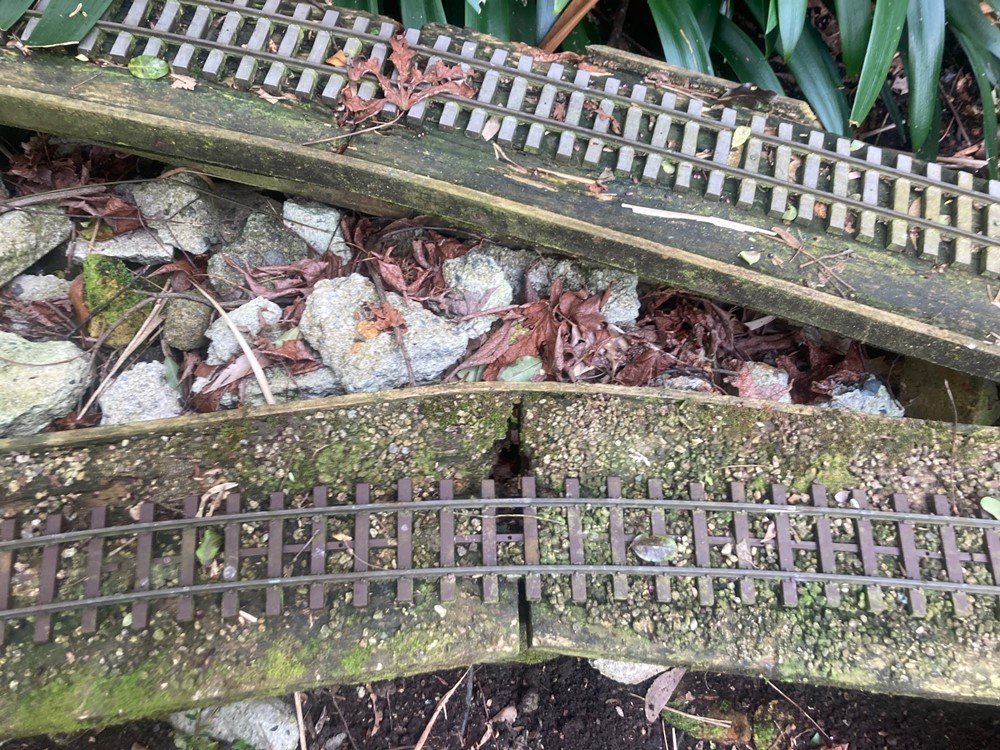
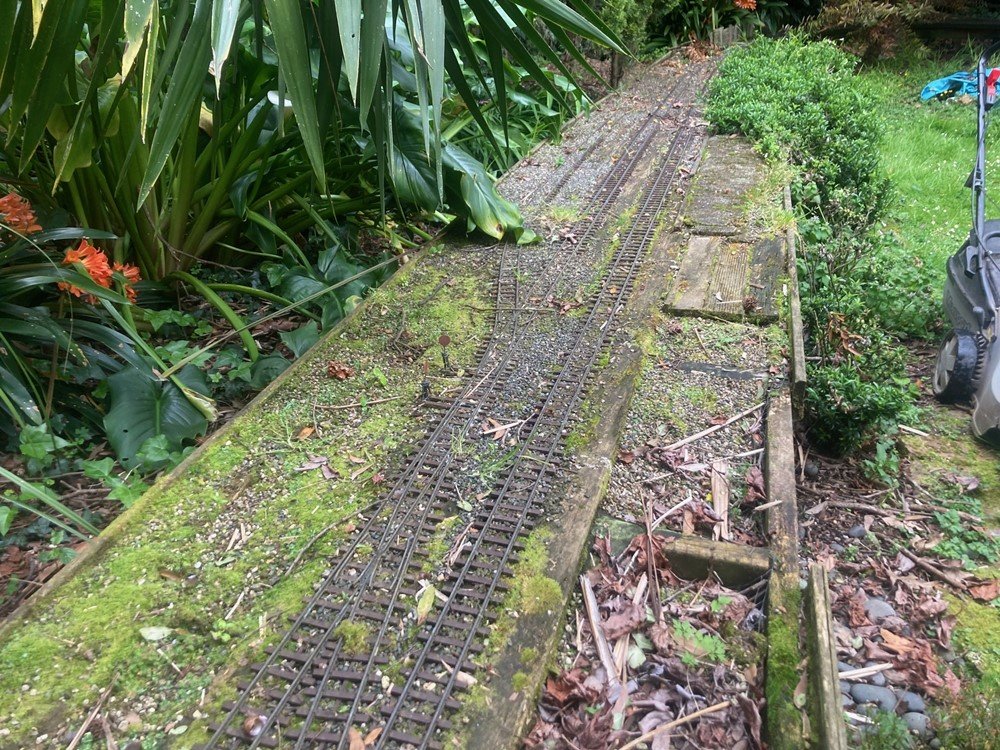
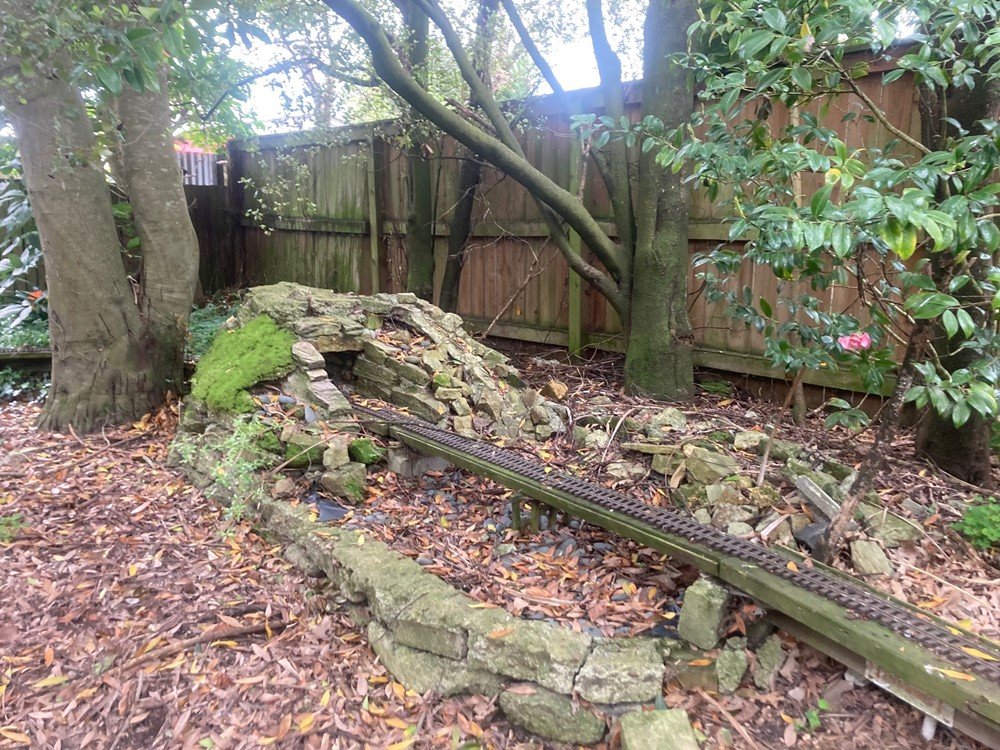
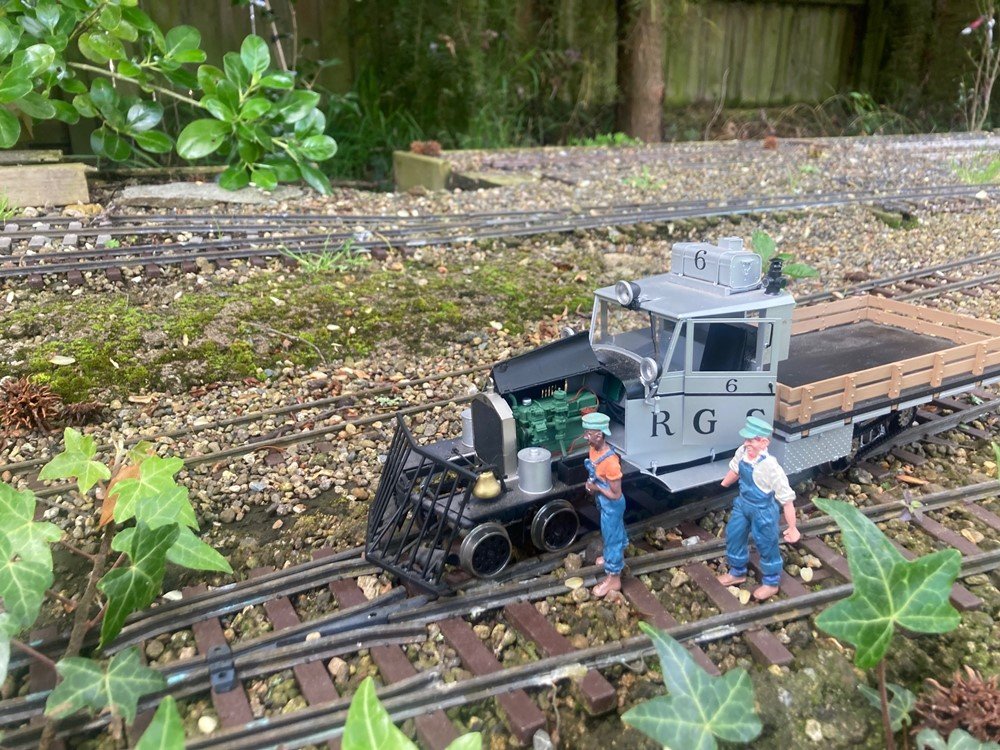
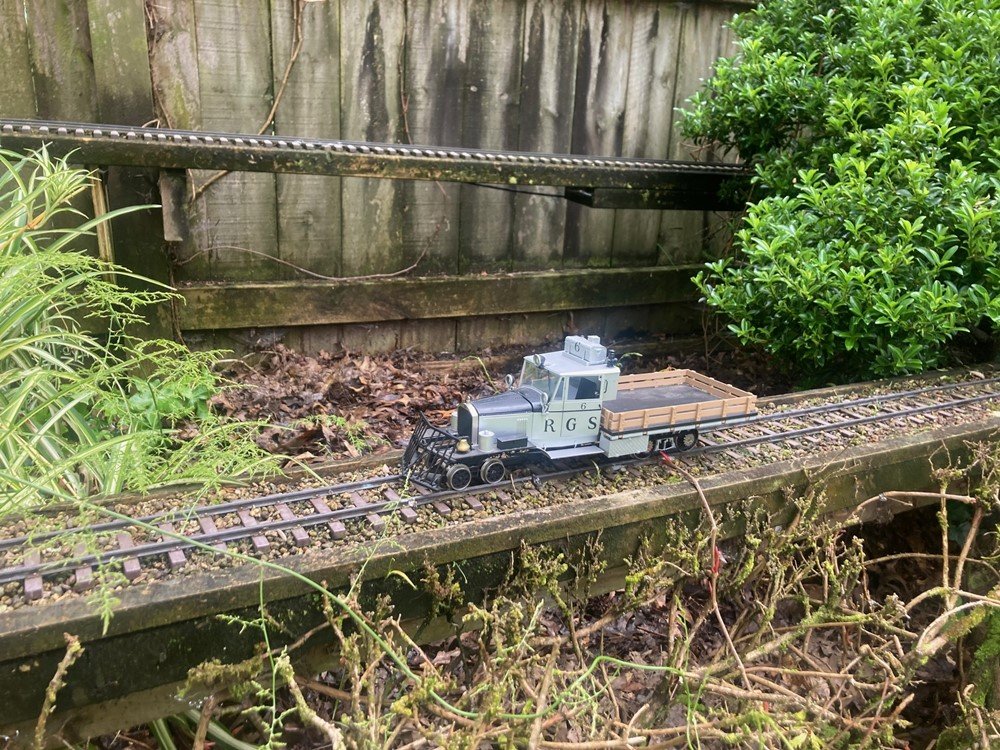
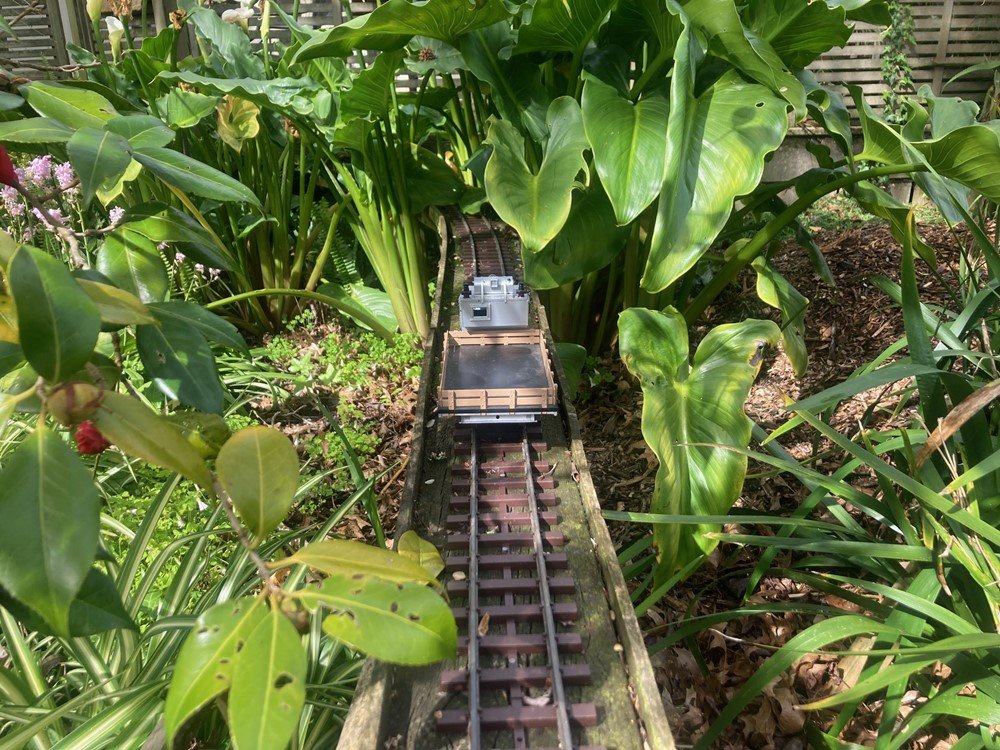
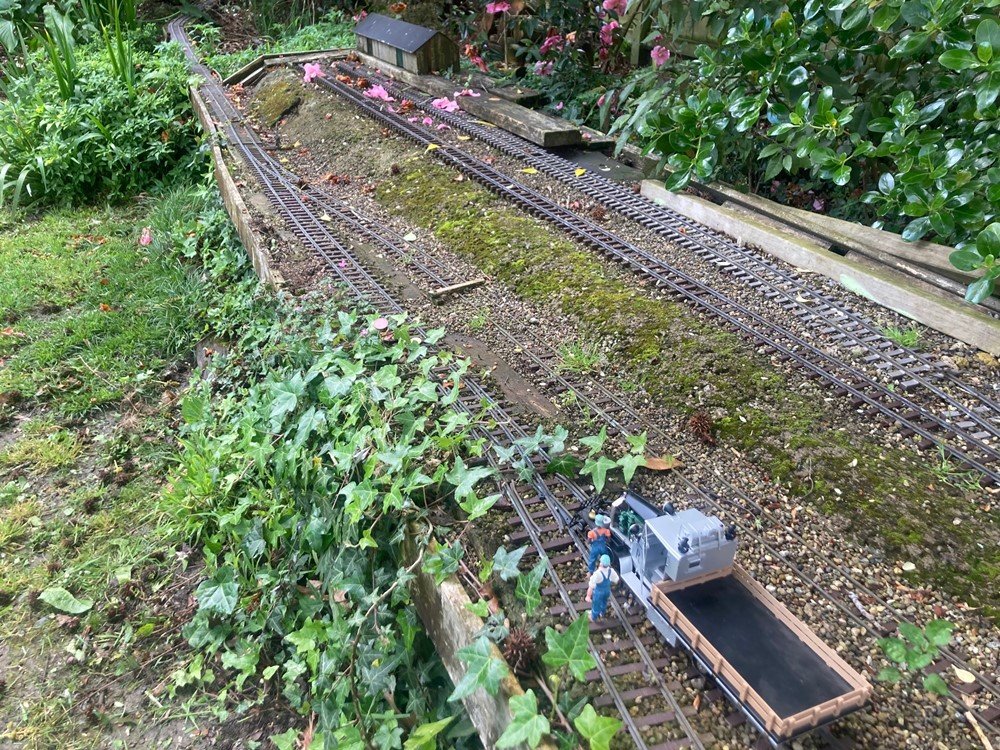
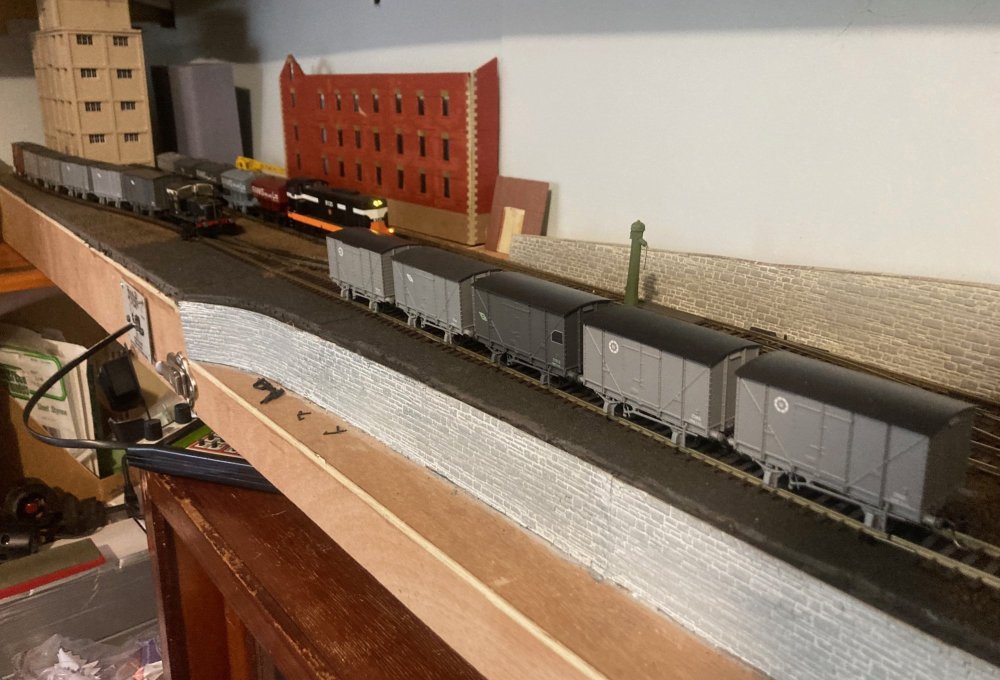

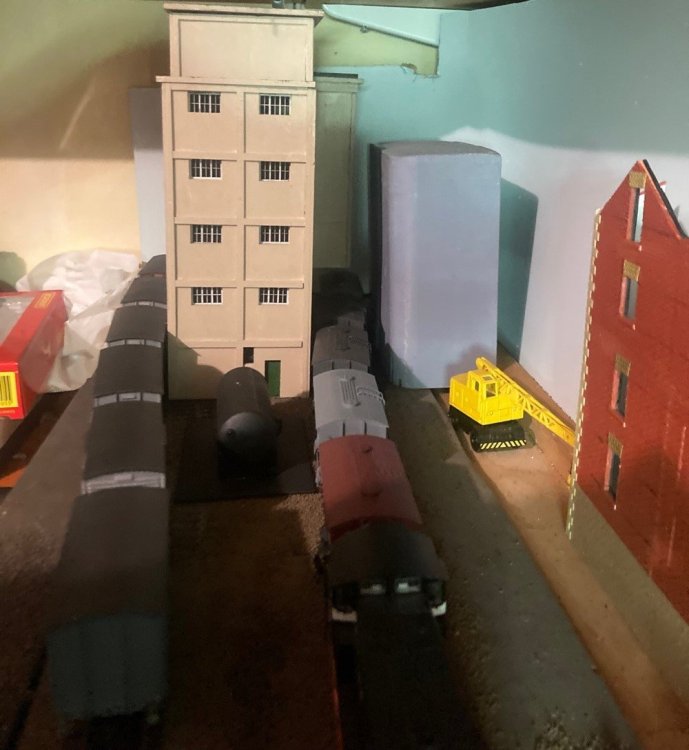
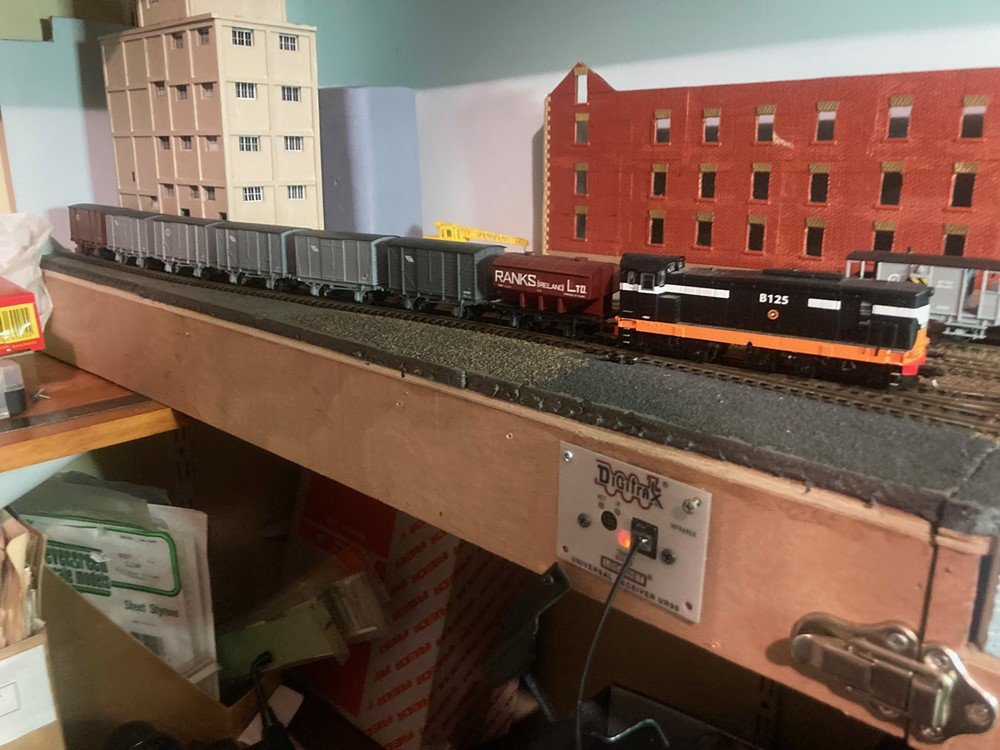
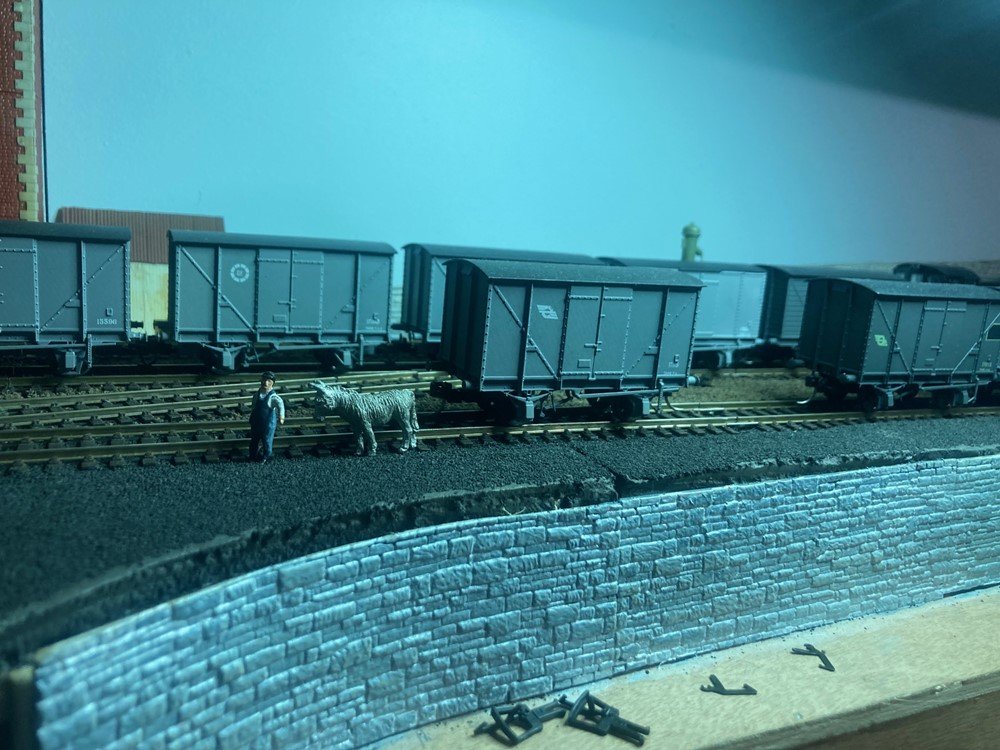
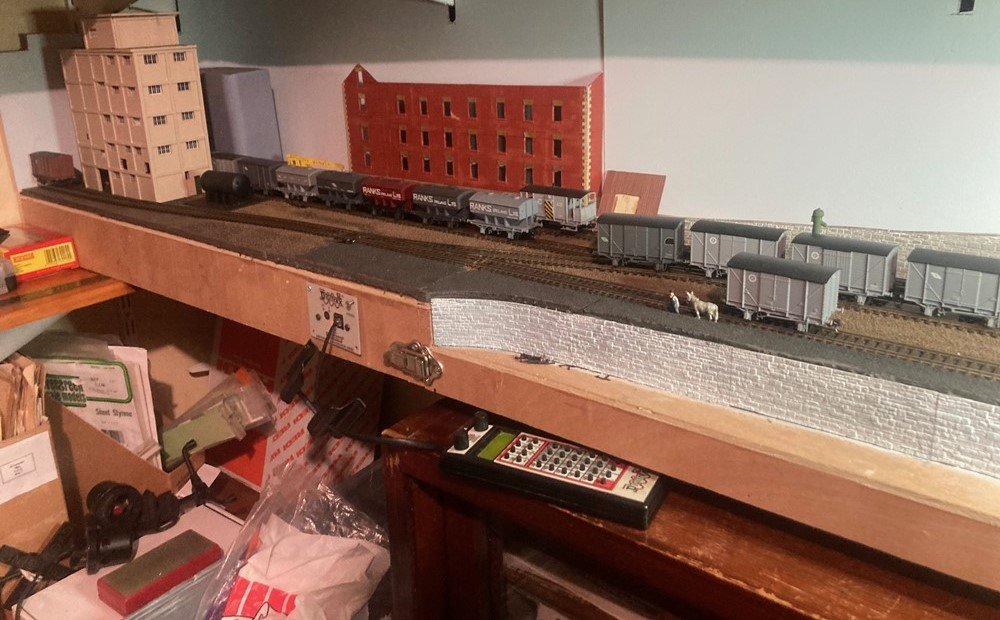
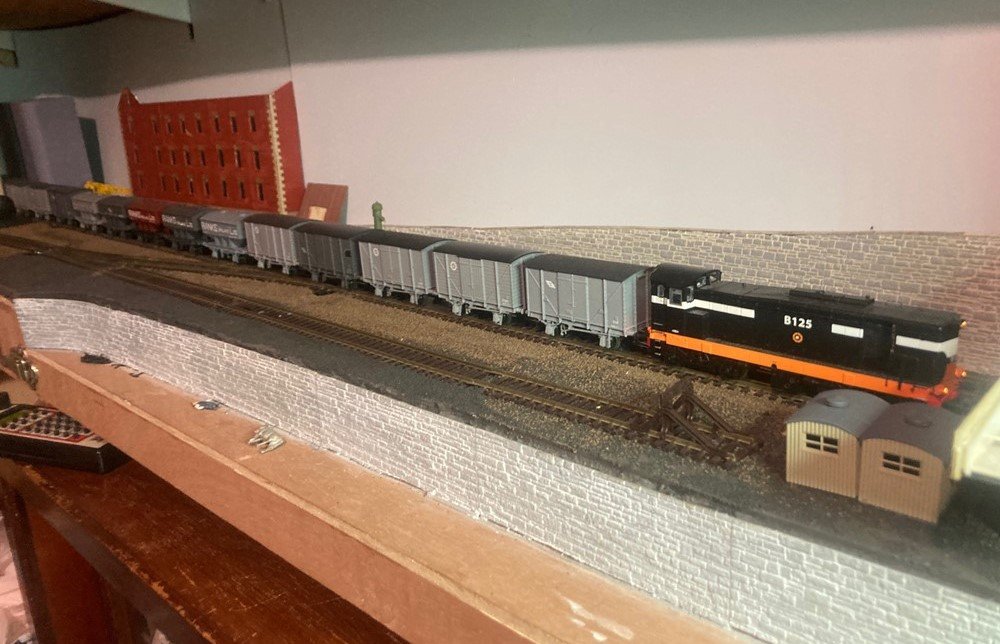
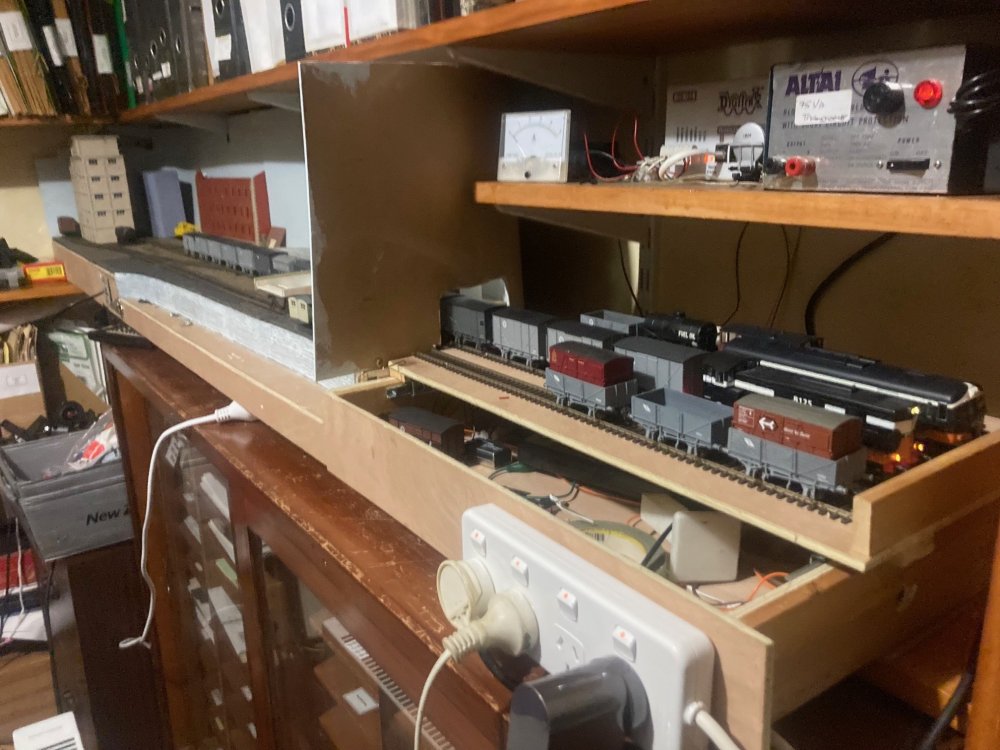


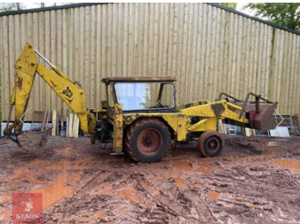
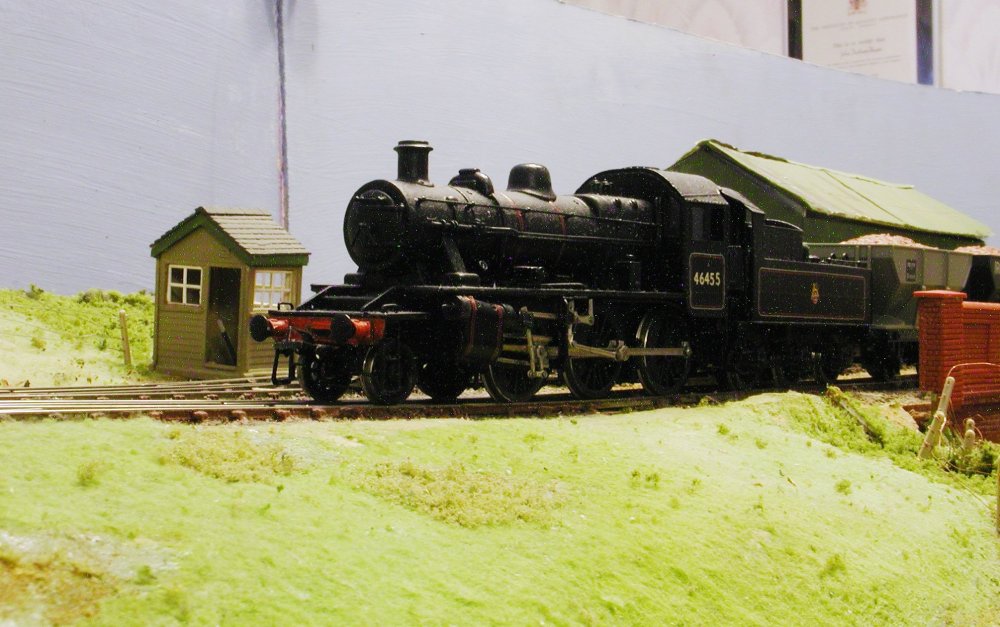
O Gauge Irish Class A and Class B Tank Wagons
in Irish Models
Posted
Most Irish tank wagons up to the mid 1960s were standard British RCH designs assembled by builders like Hurst Nelson and Charles Roberts not dissimilar to the Slaters O Gauge and Bachmann OO Gauge RCH wagons, the main physical difference between the Class A and B wagons was the discharge arrangement the Class A through a siphon pipe on top of the barrel and the B through a discharge pipe under the wagon operated by a hand wheel on the top!
CIE started building 'modern" vacuum braked tank wagons in the early-mid 60s for Foynes-Drogheda & Limerick fuel oil traffic for Cement Limited and later built small batches of tank wagons in the early 70s for Burmah (6 wagons) possibly general use and fuel oil traffic to loco depots and bus garages.
The ESSO wagons were owned by ESSO Teo and were re-gauged type A & B Charles Roberts built ESSO tank wagons dating from the late 50s made redundant by the introduction of larger air braked wagons.
The majority of the older tank wagons were dumped/stored in the Sherriff St/East Wall Yard until the yard was cleared out during the early 2000s.
One interesting group of wagons similar to the Dapol Type A anchor mounted wagons formerly owned by Caltex/Texaco that were used on North Wall-Inchacore fuel trains into the late 70s early 80s.
Originally branded CALTEX they were re-branded TEXACO and ended up with the CALTEX lettering "grinning" through the paintwork an interesting lettering/weathering challenge.
Not great photos taken late afternoon late 90sThe Irish Shell Wagon is a late 1920s RCH Type A with silver body and red solebars
113 is one of the Anchor mounted Caltex wagons re-branded as Texaco.
The Caltex wagon in the bottom photo is an older anchor mounted Class A design with a rivet3ed tank barrel possibly dating from the 1940s
Type A tank wagons originally had a horizontal orange? strip at mode barrel and black solebars, later changed to red solebars!